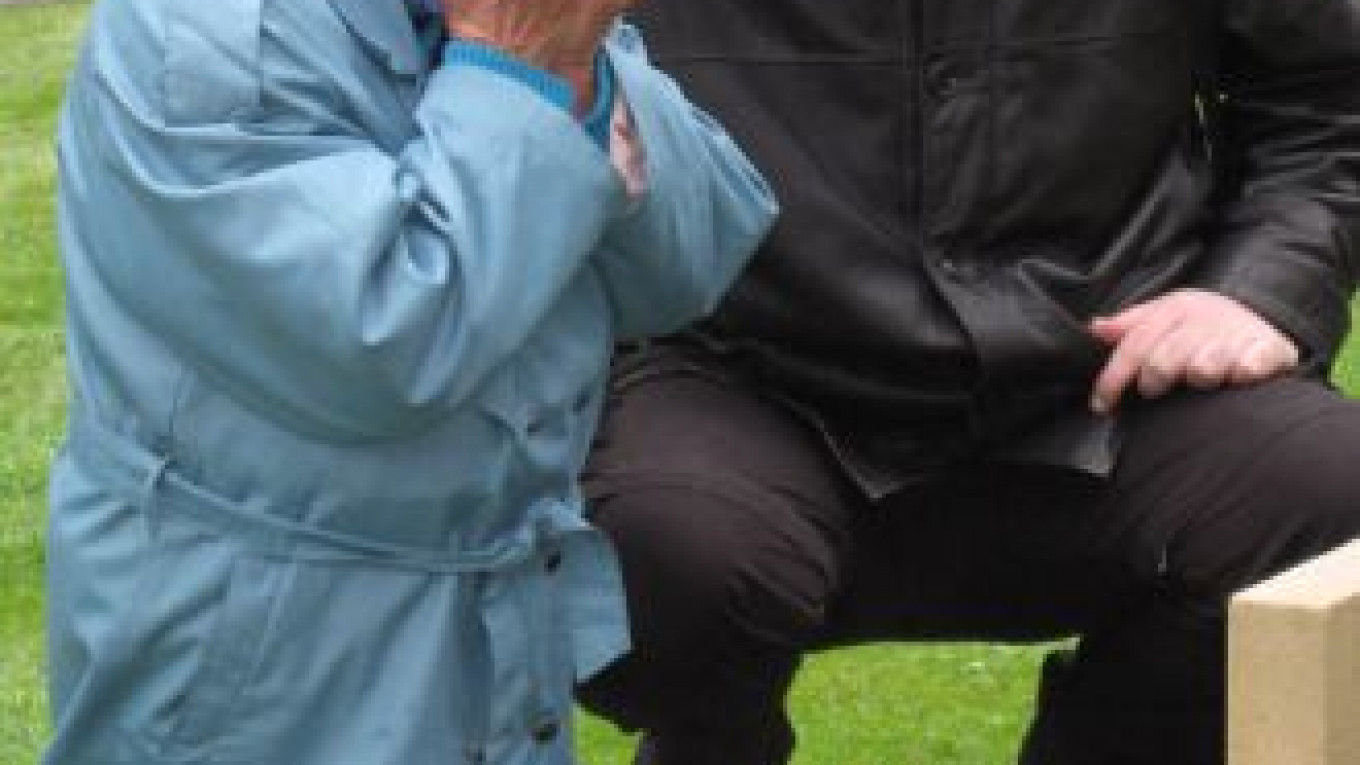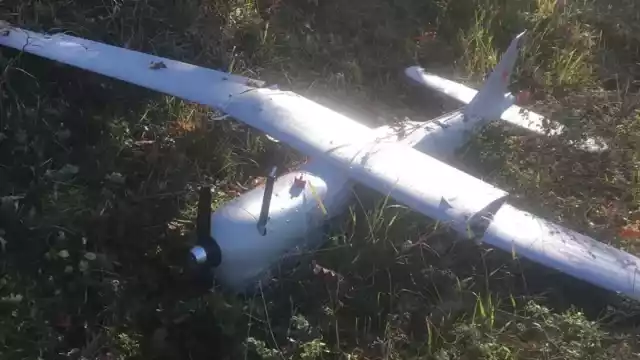When Pyotr Koval was drafted into the Red Army and sent to the front in 1941, he and his wife, Galina, stopped their watches to show that time stopped for them when they were apart.
They never wound up the watches again. Galina's was laid in her casket when she died in 1990 — 10 years before Dutch journalist Remco Reiding arrived in her hometown of Alushta, now in Ukraine, to tell her how and where her husband died.
Reiding arrived too late for the Kovals, but there are many other families living across the former Soviet Union waiting to learn the fate of their husbands and fathers. Several hundred of those fallen Soviet soldiers rest in the Russian Field of Honor cemetery near the Dutch town of Amersfoort, and Reiding has spent years tracking their relatives to give them closure.
More than 3.7 million Soviet soldiers who died in World War II are buried outside present-day Russian territory, according to Russian Defense Ministry data. Of them, only about 740,000, or less than 20 percent, have been identified.
The Amersfoort cemetery has 865 graves, and although local archives have data on the soldiers, the information was never passed to the Soviets in the tumult of postwar reconstruction.
Reiding has been tracking down the soldiers' families since 1998 and has so far found 177 of them. Some have been able to travel to the cemetery thanks to a donation-funded program called "Adopt a Grave," proceeds of which are used to fund trips to Amersfoort.
Reiding, 34, grew up near the cemetery but never really paid attention to it. Then in 1998 the editor of the local newspaper where he worked as an intern asked him to write a story about the cemetery, and he realized that the letters on the modest tombstones were in Cyrillic.
He soon realized that nobody knew what they meant and delved into the local archives to find out.
As he eventually learned, the first batch of 101 war prisoners was shipped to the town in September 1941, unloaded at a cattle-discharging belt by the railway, paraded across town and locked into an open-air cage of barbed wire in the yard of the Amersfoort concentration camp.
Dutch media reports said at the time that the arrivals had a "Mongolian appearance," although they were actually from the Turkic nation of Uzbekistan, a Soviet republic at the time. It was all the same to the Nazis, though, because both races were considered "inferior" — "Untermenschen."
Locals figured that the Nazis planned to use the prisoners, caged "like in a zoo," for propaganda, said Frans van den Berg, 81, whose father was forced to cook for the prisoners and who saw the premises as a young boy.
At first, though, there was no need to cook at all. Only bread was thrown into the cage from time to time, in hopes that the "Untermenschen" would expose their nature by fighting over it, giving a film crew lurking nearby ample footage for a propaganda movie, Van den Berg said.
But the Nazis were proved wrong by both the Uzbeks and the Dutch. The prisoners took the bread in a disciplined and orderly fashion, and appalled locals attempted to help them. The propaganda plan fell through, and the 77 soldiers who didn't die of starvation were shot dead in April 1942.
The other 691 inhabitants of the Russian Field of Honor are Soviet prisoners who almost made it back home. All of them were liberated from concentration camps by the Allies in 1945 but died of health problems in the following weeks.
They were laid to rest in the American Battlefield of Margraten in the south of the Netherlands. But in 1947, as the Cold War was picking up steam, the Americans decided that they wanted the cemetery for their own dead and reburied the remains in Amersfoort.
Nobody ever took the trouble to inform the soldiers' relatives in the Soviet Union about the fate of their loved ones.
"In the diligence of the postwar reconstruction years, we were simply too busy to care about the fallen Soviet soldiers," said Bert Prinsen, an Amersfoort resident who has donated money to bringing relatives to the cemetery.
The Soviet side did not put up a fuss either, also because of the Cold War. Efforts to track the families of slain Red Army soldiers were mostly limited to the East European countries of the Warsaw Pact, Moscow's answer to NATO, said Defense Ministry official Ilya Prokofyev.
Under deals that Moscow has with most European countries, the maintenance of the graves became the responsibility of the country where they are located, Prokofyev said.
Russian authorities did not begin to look for World War II casualties in Central and Western Europe until about 2001. Prokofyev, who works at the ministry department handling the mammoth task, said he has participated in tracking expeditions to Germany and Poland.
Russia has underperformed even on its own soil. A quarter of all graves of foreign soldiers buried in Russia are in poor condition, compared with 8 percent abroad, Prokofyev's boss Alexander Kirilin told Komsomolskaya Pravda last week.
Foreign volunteers such as Reiding, who was handed a Defense Ministry award for his work in 2003, are also few and far between. Prokofyev said he only knew one other private initiative similar to Reiding's, started in Norway in 2008.
Reiding spent two years researching Dutch, German, U.S. and Russian archives before obtaining his first lead — a list of contact addresses for the soldiers, poorly transliterated by the Americans.
He started off with Alusha, a resort town on the Crimean Peninsula. But the house and even the street listed in the 1940s no longer existed.
Reiding arranged a call for help on a local radio show, which brought him together with a surviving neighbor of Pyotr and Galina Koval, who told him the story of the stopped watches.
Reiding pressed on and finally located the first living relative of an Amersfoort-buried soldier — Dmitry Botenko, son of Vladimir Botenko. Two years had passed since Reiding first walked the Russian Field of Honor.
Among other relatives was Lidia Petukhova, 73, a native of the Oryol region who moved to Moscow as a teenager, spending the next half-century working at an army epaulet factory.
Her father, Tikhon Salnikov, was conscripted in 1941 when she was 4. The last thing she ever heard about him before Reiding appeared was that he was taken prisoner on the Smolensk front and interned to Germany in 1943.
Oryol was captured by advancing Nazi forces between 1941 and 1943. When Petukhova and her mother returned to their home village of Privolye, they found their house in ruins and cattle — the staple of peasant wealth — taken away.
The only items she inherited from her father were a picture and a teaspoon. She uses the spoon every day when she drinks tea at her kitchen table.
Petukhova's eyes still light up when she thinks back to the moment her cousin called her on the phone in 2009 with the news that Dutch journalist Reiding had found her father's grave. She cried all night, Lidia said in an interview at Reiding's Moscow apartment.
After the war, she and her mother filed numerous requests for information with the Soviet authorities, but all they learned was that he had gone missing. Her mother never remarried and died in 1983.
U.S. archive data unearthed by Reiding indicated that Tikhon Salnikov was kept at the Stalag VI A, a slave labor camp near the town of Hemer in western Germany. He was moved to a hospital by American soldiers and died on May 23, 1945, 15 days after obtaining freedom.
The news gave her closure — a luxury her cousins, also war orphans, were denied, she said. Moreover, Petukhova was able to visit her father's grave in 2010, 69 years after she last saw him.
It also marked Petukhova's first trip out of Russia and her first ride on an airplane.
She drank a shot of vodka at the grave and sprinkled some on the tombstone, following Russian tradition. Also, she left cookies and candy.
The trip was paid for through the system of "grave adoptions," Reiding said. Adopting the grave of a Soviet soldier, which can be done through Reiding's web site, Soldaat.su, costs 50 euros ($70), and the money is used to finance trips for relatives of fallen soldiers.
About 160 graves have been adopted since the system was implemented last year, although only a handful of people have traveled to the Netherlands through it so far. Participation is open to closest relatives only, and 15 children, brothers and sisters of soldiers are currently on the waiting list.
Amersfoort resident Bert Prinsen was one of those who adopted a grave. He also hosted Petukhova during her stay in the Netherlands. He said he was moved by pity but also by desire for historical justice.
"The Russians are just as much our liberators as the Americans or the English," he said by phone.
"Every year in Holland we honor the fallen American, British and Canadian soldiers. But not the Russians," he said. "Through Reiding's work and, of course, because of changing views since the fall of communism, this has changed."
A Message from The Moscow Times:
Dear readers,
We are facing unprecedented challenges. Russia's Prosecutor General's Office has designated The Moscow Times as an "undesirable" organization, criminalizing our work and putting our staff at risk of prosecution. This follows our earlier unjust labeling as a "foreign agent."
These actions are direct attempts to silence independent journalism in Russia. The authorities claim our work "discredits the decisions of the Russian leadership." We see things differently: we strive to provide accurate, unbiased reporting on Russia.
We, the journalists of The Moscow Times, refuse to be silenced. But to continue our work, we need your help.
Your support, no matter how small, makes a world of difference. If you can, please support us monthly starting from just $2. It's quick to set up, and every contribution makes a significant impact.
By supporting The Moscow Times, you're defending open, independent journalism in the face of repression. Thank you for standing with us.
Remind me later.






